VinceC
Mentor
and another, probably around f/5.6 or f/8.
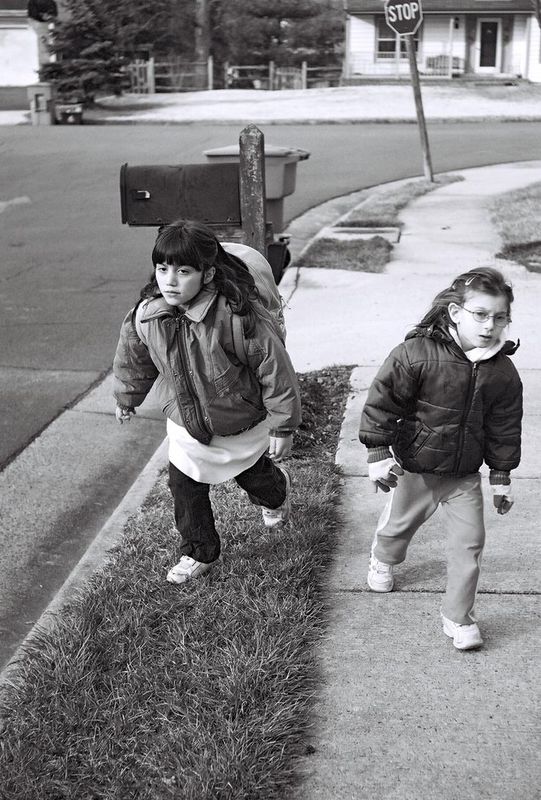

Last edited:
sbug
Acceptably Sharp
Mine is # 375161, black & chrome.
Nice shots everyone!
Nice shots everyone!
jja
Well-known
venchka
Mentor
I knew it was here somewhere...
I knew it was here somewhere...
I asked about mine in the Spring...
When folks talk about the late "black & chrome" version: the only thing black is the narrow ring near the front with the aperture numbers on it. It isn't black and chrome like the Nikkor teles or the late Canon lenses.
I knew it was here somewhere...
jja said:Wayne or Vince, a quick serial number question: What is the range for this lens? Mine has a 7-digit serial number, and most of the ones I've seen have 6.
I asked about mine in the Spring...
NIKON KIU said:Nikkor-S.C 1 : 1.4 f = 5cm No. 3958xx
the Nikkor-S was produced in great numbers, probably around 80,000 to 90,000 lenses were produced including many in the screw-mount.
Last serial number recorded seems to be in the 417xxx range so makes yours pretty late production...The last ones didn't have the C after Nikkor-S
Kiu
When folks talk about the late "black & chrome" version: the only thing black is the narrow ring near the front with the aperture numbers on it. It isn't black and chrome like the Nikkor teles or the late Canon lenses.
Last edited:
MikeL
Go Fish
Hey Vince, a slight circular pattern to the background is the pattern I occasionally see with certain backgrounds on my 35mm at 1.8. I've also seen it in posted photos from a 50mm Noctilux. Points of light and sometimes leaves are stretched slightly into ovals, and they seem to be oriented in a circular pattern around the center. If it's fuzzy enough, depending on distance or focal length like on the Noctilux, it can look fine. Occasionally on my 35mm it looks a bit trippy.
furcafe
Mentor
IMHO, while the Life photographers were correct that the Nikkor is a fine lens, equal to the contemporary Western products, IMHO they were laying it on a little thick stating that the Nikkors were superior to the Zeiss Sonnars, except perhaps in build quality. True, build quality is not a trivial factor considering that sample variation between lenses was often greater back then--it's also my understanding that the Life guys got to choose the "best of the litter" from the Nippon Kogaku factory (something they couldn't easily do w/the German lenses @ the time)--but it doesn't mean that the Nikkor was categorically a superior lens, particularly when compared to the W. German Sonnars once they got Oberkochen up to speed around '51 or so (but those were never made in LTM) or even a good example of the E. German Sonnars (wide-open example: http://static.flickr.com/7/6935549_99ec6d03f6_o.jpg ). As to the Leitz products, let's just say even Leicaphiles will acknowledge that none of their f/1.5 lenses performed up to Zeiss or Nikkor standards @ the time. 
IME, which includes shooting good examples of both lenses in all of their various mounts, I haven't found the Nikkor to be superior to the post-WWII Sonnar, E. or W. German, in either flare control or sharpness, whatever the aperture, & f/1.4 on the Nikkor is only a teeny bit brighter than f/1.5 on the Sonnars (judging from TTL metering): I've found them to be pretty much equal in all respects, except for a bit more veiling flare & boke "swirliness" in the Nikkor wide-open, which I think is a direct result of the Nikkor's design (in my non-technical opinion, a "stretched" Sonnar). I've reached a similar conclusion re: the 85/2 Sonnars v. Nikkor-Ps. It was certainly a major achievement by Nippon Kogaku, indeed a major achievement for post-WWII Japanese industry, just to make a lens that was among the best in the world, & it helped cement the Nikon brand's well-deserved reputation for quality, but I think there was some hindsight mythologizing going on.
IME, which includes shooting good examples of both lenses in all of their various mounts, I haven't found the Nikkor to be superior to the post-WWII Sonnar, E. or W. German, in either flare control or sharpness, whatever the aperture, & f/1.4 on the Nikkor is only a teeny bit brighter than f/1.5 on the Sonnars (judging from TTL metering): I've found them to be pretty much equal in all respects, except for a bit more veiling flare & boke "swirliness" in the Nikkor wide-open, which I think is a direct result of the Nikkor's design (in my non-technical opinion, a "stretched" Sonnar). I've reached a similar conclusion re: the 85/2 Sonnars v. Nikkor-Ps. It was certainly a major achievement by Nippon Kogaku, indeed a major achievement for post-WWII Japanese industry, just to make a lens that was among the best in the world, & it helped cement the Nikon brand's well-deserved reputation for quality, but I think there was some hindsight mythologizing going on.
VinceC said:The Nikkor was intentionally faster than the Zeiss lens, using generally excellent coatings that have stood up well over time, resulting in better flare control than the 1.5 Sonnar. Zeiss also had quality-control problems connected to its postwar breakup -- lenses were being built on both sides of the iron curtain -- and in any event didn't sell lenses in the LTM mount. The Nikkor has click stops. Life magazine photographers, the discriminating 35mm photographers of their era, considered the Nikkor to be sharper than Zeiss or Leitz lenses. The Nikkor 50/1.4 set the bar for modern lenses. It certainly has "bokeh" problems and was reformulated about 12 years later to address those, but by then the SLR era was in full swing.
Last edited:
furcafe
Mentor
That's the "swirly" boke I mentioned in my last post. My guess is that it's caused by coma &/or astigmatism that couldn't be corrected for given the Sonnar design & optical technology that was available @ the time, per Vince's post. I presume the Noctilux, though much more modern (computers v. abaci), suffers from a similar problem on account of the limits imposed by its f/1 max. aperture.
MikeL said:Hey Vince, a slight circular pattern to the background is the pattern I occasionally see with certain backgrounds on my 35mm at 1.8. I've also seen it in posted photos from a 50mm Noctilux. Points of light and sometimes leaves are stretched slightly into ovals, and they seem to be oriented in a circular pattern around the center. If it's fuzzy enough, depending on distance or focal length like on the Noctilux, it can look fine. Occasionally on my 35mm it looks a bit trippy.
Last edited:
VinceC
Mentor
>>...but it doesn't mean that the Nikkor was categorically a superior lens, particularly when compared to the W. German Sonnars once they got Oberkochen up to speed around '51 or so...<<
I use the notes in Duncan's 1951 book as my primary source in the Nikon/Zeiss/Leica discussion. Quality control was the thing that impressed the Life photographers most. There was no sample variation (and I've never encountered it in the various Nikkors I've owned ... after I cracked the front element of a 50/1.4 while on assignment, I swapped in a new front element from a lens a couple of years older, and the lens -- used in my examples -- continues to perform very well. I've done a similar front-element swap with an 85/2 that I also cracked on assignment). When one of their Japanese photo assistants used a lens that stunned them (the Nikkor 85/2), they went to the factory to see if it was a fluke and were allowed to randomly pick lenses out of the inventory, which gives you an idea of the clout of Life photographers back then. They found no sample variation. All the lenses were of equal quality.
It's significant that Duncan and others were mainly using Leicas at a time when Zeiss had the reputation for better optics. Leitz's pursuit of the finest possible optics was largely a response to Japanese LTM lenses.
Also, history and dates are important, because they show cause and effect. Duncan (and many others who didn't write technical notes in the back of their books) discovered Nikon lenses in spring/summer of 1950, and the Korean War broke out in the summer. They didn't have time to wait for Oberkockhen to get its act together in 1951. Zeiss fixing its quality control was a direct response to Nikkors having outscored Zeiss on a lens test by a U.S. magazine, highlighted by a New York Times photo reviewer. Zeiss blamed sample variation due to an Eastern German manufacture and got a retest in which both lenses (the Sonnar and Nikkor) peformed equally.
In my opinion, the dispute over whose was marginally better quickly became secondary. The real story is that Japanese companies were matching German quality while also constantly innovating and tweaking. Within two and three years, Nikon and Canon were introducing lenses that were significantly wider and/or faster than their German competitors, and putting them in mounts that could be used by German cameras. Soviet designs remained static and were largely unavailable outside of the Soviet trading bloc.
I use the notes in Duncan's 1951 book as my primary source in the Nikon/Zeiss/Leica discussion. Quality control was the thing that impressed the Life photographers most. There was no sample variation (and I've never encountered it in the various Nikkors I've owned ... after I cracked the front element of a 50/1.4 while on assignment, I swapped in a new front element from a lens a couple of years older, and the lens -- used in my examples -- continues to perform very well. I've done a similar front-element swap with an 85/2 that I also cracked on assignment). When one of their Japanese photo assistants used a lens that stunned them (the Nikkor 85/2), they went to the factory to see if it was a fluke and were allowed to randomly pick lenses out of the inventory, which gives you an idea of the clout of Life photographers back then. They found no sample variation. All the lenses were of equal quality.
It's significant that Duncan and others were mainly using Leicas at a time when Zeiss had the reputation for better optics. Leitz's pursuit of the finest possible optics was largely a response to Japanese LTM lenses.
Also, history and dates are important, because they show cause and effect. Duncan (and many others who didn't write technical notes in the back of their books) discovered Nikon lenses in spring/summer of 1950, and the Korean War broke out in the summer. They didn't have time to wait for Oberkockhen to get its act together in 1951. Zeiss fixing its quality control was a direct response to Nikkors having outscored Zeiss on a lens test by a U.S. magazine, highlighted by a New York Times photo reviewer. Zeiss blamed sample variation due to an Eastern German manufacture and got a retest in which both lenses (the Sonnar and Nikkor) peformed equally.
In my opinion, the dispute over whose was marginally better quickly became secondary. The real story is that Japanese companies were matching German quality while also constantly innovating and tweaking. Within two and three years, Nikon and Canon were introducing lenses that were significantly wider and/or faster than their German competitors, and putting them in mounts that could be used by German cameras. Soviet designs remained static and were largely unavailable outside of the Soviet trading bloc.
Last edited:
sbug
Acceptably Sharp
This has become a very interesting thread. I'd say that most lenses, particularly as you get to f2 and faster, put their own distinctive signature on the image. Sometimes simply lower contrast or flare and sometimes more complex signatures such as swirl bokeh. Love it, hate it or somewhere in-between, as long as you know what to expect, I don't see a problem with any of them.
VinceC
Mentor
MikeL,
I see your point about the circular background in my "bad bokeh" shot. This is partly due to composition. The whole shot is framed by branches receding from the camera, which lends to the circular pattern. I've never noticed the effect in my 35/1.8, but I nearly always use that lens for interiors. In my use, I've never run into "bad bokeh" problems with it.
For what it's worth, there are a few scenes in "The Wizard of Oz" that display this kind of bokeh. That was shot in 1938-39 using, I suppose, German lenses. Early Technicolor was a very slow emulsion, probably on par with early Kodachrome, so they were probably using a combination of extremely bright lights and fast lenses (shutter speed isn't a variable in movie photography).
I see your point about the circular background in my "bad bokeh" shot. This is partly due to composition. The whole shot is framed by branches receding from the camera, which lends to the circular pattern. I've never noticed the effect in my 35/1.8, but I nearly always use that lens for interiors. In my use, I've never run into "bad bokeh" problems with it.
For what it's worth, there are a few scenes in "The Wizard of Oz" that display this kind of bokeh. That was shot in 1938-39 using, I suppose, German lenses. Early Technicolor was a very slow emulsion, probably on par with early Kodachrome, so they were probably using a combination of extremely bright lights and fast lenses (shutter speed isn't a variable in movie photography).
furcafe
Mentor
I agree. Of course, the Zeiss Foundation in W. Germany had a bit of a problem getting started up as they had lost their main lens works & many personnel @ Jena to the Eastern Bloc & the Contax factory to the USSR, & had to start from scratch in building both the lenses & the new IIa/IIIa cameras (most of their factories in W. Germany had been devoted to making medium & large format cameras). So Zeiss wasn't necessarily spurred to improve quality control by the Japanese challenge per se (though they should have been in hindsight), they were just trying to get back to what they had before WWII. I think Nippon Kogaku's factories weren't in quite as bad shape & they had more help from SCAP in rebuilding than the Allied forces in W. Germany were giving Zeiss (if any).
Also, although many Life photographers used Leicas, it is my understanding that their "house" camera system in the 1930s & 40s was the Contax (II & III). When Time-Life switched to the new IIa/IIIa models in the early '50s, they donated some of their old II's & III's to Edmund Hilary's Mt. Everest expedition (though he personally took a Retina to the summit).
Also, although many Life photographers used Leicas, it is my understanding that their "house" camera system in the 1930s & 40s was the Contax (II & III). When Time-Life switched to the new IIa/IIIa models in the early '50s, they donated some of their old II's & III's to Edmund Hilary's Mt. Everest expedition (though he personally took a Retina to the summit).
VinceC said:Also, history and dates are important, because they show cause and effect. Duncan (and many others who didn't write technical notes in the back of their books) discovered Nikon lenses in spring/summer of 1950, and the Korean War broke out in the summer. They didn't have time to wait for Oberkockhen to get its act together in 1951. Zeiss fixing its quality control was a direct response to Nikkors having outscored Zeiss on a lens test by a U.S. magazine, highlighted by a New York Times photo reviewer. Zeiss blamed sample variation due to an Eastern German manufacture and got a retest in which both lenses (the Sonnar and Nikkor) peformed equally.
In my opinion, the dispute over whose was marginally better quickly became secondary. The real story is that Japanese companies were matching German quality while also constantly innovating and tweaking. Within two and three years, Nikon and Canon were introducing lenses that were significantly wider and/or faster than their German competitors, and putting them in mounts that could be used by German cameras. Soviet designs remained static and were largely unavailable outside of the Soviet trading bloc.
Last edited:
rogue_designer
Reciprocity Failure
ferider said:Like Mike I have seen that circular pattern with other lenses as well.
because the individual OOF points are ellipsoidal, rather than circular, their orientation in relation to the image center becomes very apparent, lending the circular effect to the bokeh.
What makes them ellipsoidal in the first place tho, I have no idea.
VinceC
Mentor
I've seen old pictures of Life photographers using both Contax and Leica. Usual kit seemed to be a 35mm plus a Rolliflex TLR.
I think the Japanese benefited from creating new camera systems from scratch, whereas the Germans were trying to rebuild pre-war camera systems.
Germany's immediate postwar history is more complicated than that of Japan because of the Russian/French/UK/US occupation. But German companies in the U.S. sector, and later bizonal economic unit, did receive considerable assistance from the Allies. The occupation powers were primarily involved in economic matters and reconstruction and making the German economy self-sustaining (U.S. and U.K. taxpayers didn't want to be supporting Germans any longer than necessary). Lucius Clay, the U.S. proconsul, was emphatic on rebuidling and assisting German industry and laid the groundwork for the Marshall Plan, in which Germany participated. I have a 1950 guide to the first FotoKina in Koeln, which says Allied contracts, including U.S. military exchange contracts, were extremely important in getting the German photo industry back on its feet.
Finally, the Leica M seems to have been a direct response to the new competition from the Japanese products.
Zeiss's postwar problems are only clear in retrospect. At the time, it wasn't clear that Germany -- and hence the Zeiss corporation -- would be split into two distinct countries.
I think the Japanese benefited from creating new camera systems from scratch, whereas the Germans were trying to rebuild pre-war camera systems.
Germany's immediate postwar history is more complicated than that of Japan because of the Russian/French/UK/US occupation. But German companies in the U.S. sector, and later bizonal economic unit, did receive considerable assistance from the Allies. The occupation powers were primarily involved in economic matters and reconstruction and making the German economy self-sustaining (U.S. and U.K. taxpayers didn't want to be supporting Germans any longer than necessary). Lucius Clay, the U.S. proconsul, was emphatic on rebuidling and assisting German industry and laid the groundwork for the Marshall Plan, in which Germany participated. I have a 1950 guide to the first FotoKina in Koeln, which says Allied contracts, including U.S. military exchange contracts, were extremely important in getting the German photo industry back on its feet.
Finally, the Leica M seems to have been a direct response to the new competition from the Japanese products.
Zeiss's postwar problems are only clear in retrospect. At the time, it wasn't clear that Germany -- and hence the Zeiss corporation -- would be split into two distinct countries.
Last edited:
venchka
Mentor
A final word before more photos....
A final word before more photos....
We must be doing something right. This thread was linked in the Leica Users Group.
Back to the photos.
A final word before more photos....
We must be doing something right. This thread was linked in the Leica Users Group.
------------------------------
Message: 25
Date: Fri, 06 Oct 2006 22:45:28 -0400
From: "Dan Chang" <[email protected]>
Subject: [Leica] FS: Nikon LTM 50/1.4 $300
To: [email protected]
Message-ID: <[email protected]>
Content-Type: text/plain; format=flowed
SN# 32xxxx, KEH EX grade, with back and fron cap. the lens was CLAed about 3
year ago, so focus is smooth, aperture is clean and dry, lens is clean with
out fogging, no clean marks. I find this lens has veil flare when used at
f1.4 which I do not like very much and the bokeh some time kind of ugly. you
can see post here about pictures at 1.4
http://www.rangefinderforum.com/forums/showthread.php?p=389750#post389750
See picture here
http://www.photo.net/bboard/q-and-a-fetch-msg?msg_id=00IL92&tag=
------------------------------
Back to the photos.
bobkonos
Well-known
Wonderful photgraphs Wayne and Roland-thanks for sharing. I also use the 5 cm f1.4 rangefinder Nikkor on my R2S with wonderful results. I was going to get a C/V 5cm f1.5 Nokton for the R2S, but I saw no need since I had the older Nikkor already. Makes a great outfit for me, along with the C/V 85 f3.5 APO-Lanthar (tremendous lens) and the C/V 21 f4.
trittium
Well-known
Nature With the 50/1.4 Nikkor S.C.
Nature With the 50/1.4 Nikkor S.C.
I reciently decided to take my 50/1.4 Nikkor and Hexar RF on a hike around dusk. As the light faded, I opened up the lens more, and the results were beautiful. I had not really used this lens much with natural light and color film before, and the results supprised me. I was truely impressed at how it performed, and thought I would share it with you.
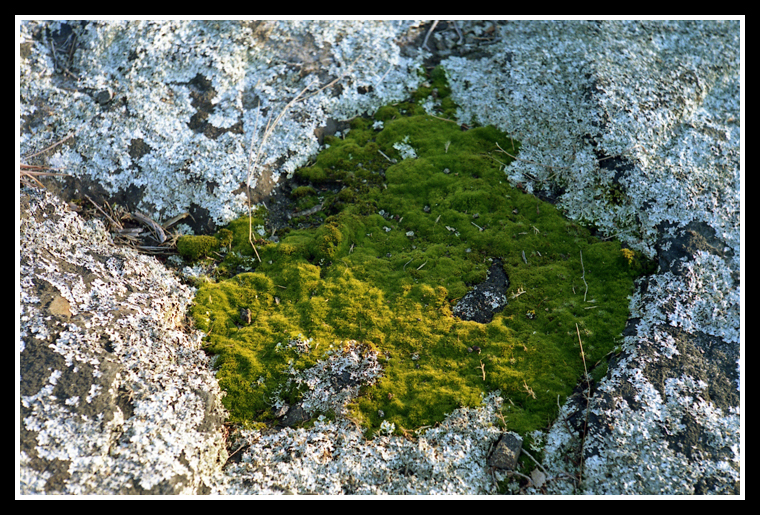
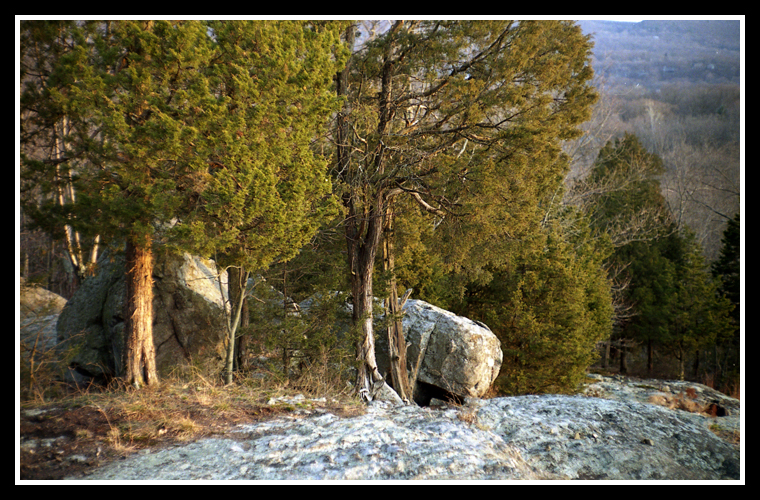
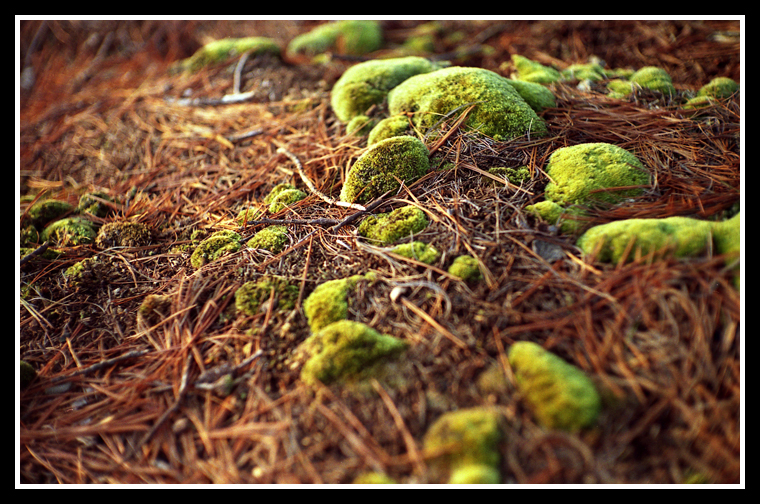
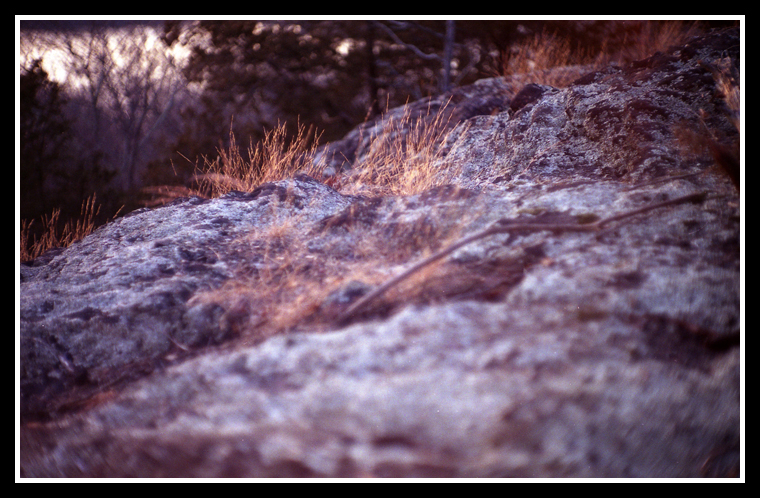
Nature With the 50/1.4 Nikkor S.C.
I reciently decided to take my 50/1.4 Nikkor and Hexar RF on a hike around dusk. As the light faded, I opened up the lens more, and the results were beautiful. I had not really used this lens much with natural light and color film before, and the results supprised me. I was truely impressed at how it performed, and thought I would share it with you.




venchka
Mentor
Wonderful! Can you please move these to the Nikkor 50/1.4 Samples only thread in the Nikon Forum?
joe? administrator? somebody?
joe? administrator? somebody?
trittium
Well-known
sorry about that! I didn't know this thread existed
Share:
-
This site uses cookies to help personalise content, tailor your experience and to keep you logged in if you register.
By continuing to use this site, you are consenting to our use of cookies.


